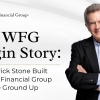
Many real estate professionals are still ambivalent about Zillow. They remember how Zillow came to the market 10 years ago with a much less industry-friendly attitude than it developed once it realized there was more money in pursuing the industry as a client rather than a competitor.
Maybe we’re just naturally wary of a potential competitor, a company that has become one of the most recognized consumer brands in real estate without ever selling a single house.
But at the same time, you have to respect a company that’s accomplished what Zillow has. When I talk to audiences about improving the service experience in the real estate industry, I use Zillow as an example of a business that gave clients what they actually wanted and needed in a way that the industry never did. We knew that people wanted to know how much their home was worth, but we perceived that as an opportunity to promote a free comparative market analysis as a (transparent) attempt to gin up a lead rather than a way to develop a long-term relationship with a potential client.
Zillow saw that opportunity and built a business worth billions of dollars providing information that the industry wasn’t willing to share for free. That was pretty smart.
Since then, of course, Zillow has become an indispensable marketing and lead generation tool for many agents and brokers, who found a ready place for all the extra money they had floating around once they stopped advertising in the newspapers. (I will always be a wee bit skeptical of a business model that depends on brokers and agents providing free content and then paying to keep others from advertising on their content, but there’s no question that Zillow is good at generating eyeballs, and most of us will always be willing to pay for that.)
Essentially, Zillow and the traditional real estate industry are classic “frenemies,” like a couple locked into a textbook co-dependent relationship — there’s lots of passion and the relationship is often emotional, occasionally obsessive and borderline addictive.
So now, into that delicate dynamic comes “Zillow Talk: The New Rules of Real Estate,” the fascinating and provocative new book from Zillow Chief Executive Officer Spencer Rascoff and Chief Economist Stan Humphries. The book brings a new set of challenges to the traditional real estate industry mindset. Specifically, Rascoff and Humphries use the vast trove of data that Zillow has assembled over the past decade to test some of real estate’s most revered and hoary shibboleths, such as:
- “Most people are better off buying rather than renting.” (Chapter 2)
- “The worst house in the best neighborhood is a good buy.” (Chapter 5)
- “You can save a lot of money buying a foreclosure.” (Chapter 8)
- “Owning a home is an indispensable part of the ‘American dream.’” (Chapter 24)
- “Eliminating the home mortgage interest deduction would ruin the real estate market.” (Chapter 25)
In all those cases, Rascoff and Humphries find that the data does not support the dogma. In particular, I found their challenges to the American dream and the mortgage interest deduction especially insightful (and brave). I won’t go into details about their reasoning, because I wouldn’t do the arguments justice, but I do think that anyone who blindly accepts the National Association of Realtors’ orthodoxy on these issues should take the time to hear what they have to say.
But “Zillow Talk” isn’t just about challenging industry dogma. There’s a lot that agents and brokers will love in this book. For example, Rascoff and Humphries make an outstanding, sophisticated case for the investment value of real estate, because they go beyond the simplistic comparisons that Wall Street economists and CNBC pundits usually make between raw home prices and stock prices. Instead, they point out that investing $100,000 in the stock market versus $100,000 in the housing market are two different types of investments because:
1. If you put that $100,000 into stocks, you still have to live somewhere.
2. Real estate has tax advantages that stocks do not.
3. Factor in the financing available for home purchases, and that $100,000 can often buy you a $400,000 or $500,000 home, rather than just $100,000 in stocks.
Ultimately, although they skip all the meaty statistical stuff that would either be fascinating if you’re a data-head or blah-blah-blah if you’re not, they find that from 1975 to 2014, real estate investments returned an 11.6 percent annual return, significantly higher than the 10.4 percent return on Standard & Poor’s 500. That’s some good stuff right there.
On top of that, Rascoff and Humphries make a (surprisingly) strong argument in favor of real estate agents as part of the transactional process:
“Maybe you’re wondering whether we still need real estate agents at all. You might be wondering if they’re heading the way of the travel agent, the stockbroker, and, well, the dodo bird. We get this question all the time. And our answer is simple: No. Not by a long shot. Real estate agents are still incredibly important, and they’re not going anywhere.” (Pages 148-150)
Even better, “Zillow Talk” contains a couple of other nuggets that can help agents become better at their jobs:
- A great analysis of the recoupment value of various types of home improvement projects, which is a great resource when discussing pricing with a client who’s expecting a dollar-for-dollar return on every dime ever spent on the home. (Chapter 10)
- An explanation as to how the length and depth of an online property description can impact the sale price of a home — that is why agents need to stop writing property descriptions like they’re classified ads. (Chapter 11)
- Advice to sellers about how to price their home – specifically, that people who overprice their home to test the market end up getting a lower price than those who start closer to the actual market price. (Chapter 15)
Indeed, it’s worth buying “Zillow Talk” just so you can rip out Chapter 15 to hand to your next overpriced seller. …
“Zillow Talk” is also a great read, engaging and absorbing. It would be easy for a book like this to devolve into a turgid mess of “econo-speak,” but most of the book flies by in relatively tight and concise chapters. Page after page, you’ll find some interesting nuggets of insight about real estate, whether it’s about the variable impact that walkability can have on home prices (not always good), the best time of the year to list a home (mid-March), or the often uncanny correlations between property values and the proximity to Starbucks, street numbers, street names, or an area’s friendliness to the LGBT community.”
(Put it this way: I’m in the market to buy a home, and after finishing “Zillow Talk,” I’m hoping to find one by the end of February that is next door to a gay couple at 888 Sunset Lake Way. Fingers crossed!)
Amid all those hits, though, it’s unavoidable that Rascoff and Humphries would have a couple of misses. For example, their version of the Zillow creation myth will raise a few eyebrows: “It’s shocking to think back and consider that, before Zillow started in 2006, in order to shop for a home, you had to scour the real estate listings in the local Sunday newspaper.” Yes, I suppose that would be “shocking,” if you were unaware of, say, realtor.com, which was founded over 10 years before 2006, or the thousands of Internet data exchange sites that existed by 2006. Without question, Zillow changed the landscape, but it’s a bit of a stretch to say that before Zillow, we were all walking around with shoeboxes full of index cards.
More substantively, I think that Rascoff and Humphries sometimes take for granted the reader’s ability to separate out correlation and causation. They clearly know the difference, but I’m not sure that the average reader will parse the fine distinctions — thinking, for example, that the correlation between higher home values and certain words in a property description is a good reason to use the word “impeccable” for every single listing. Also, I feel like they sometimes betray the fact that they are, at heart, technologists — not necessarily “real estate people” (even though Rascoff’s mother is a New York agent).
For example, they completely misunderstand the “worst house in the best neighborhood” maxim. They frame it as a choice between the cheapest home in the neighborhood and more expensive homes in the same neighborhood, when the maxim is really about the choice between the “worst house in the neighborhood” and similarly priced homes in other, lower-priced neighborhoods. That’s the choice most buyers have: Do I buy the cheapest home on a pricey block, or spend the same amount to buy into a more homogeneous neighborhood?
But these are minor quibbles about what is the best and most important book about real estate published in the last few years. “Zillow Talk” is a terrific book and a great read, raising the bar on the way we analyze the real estate market. That the book is written for the consumer, not the professional audience, reminds those of us in the industry that this is the kind of stuff we should be doing ourselves — examining the data, challenging our assumptions and educating our clients. And although Zillow has a massive advantage when looking at macro-trends across the country, every broker in the country has better access to localized data and the home-grown expertise to make sense of it.
Here’s the bottom line: If you’re a Zillow fan, then you should read “Zillow Talk” because it’s a good read with a lot of interesting stuff about real estate. And if you’re not a fan, you should still read it. After all, Zillow is here to stay, and at the very least “Zillow Talk” is a clear and frank expression of how Rascoff and Humphries see real estate and Zillow’s place in it. To paraphrase the old expression, “Know your frenemy.”
Indeed, maybe it’s time for people (including myself in this review) to stop talking about Zillow and the traditional real estate industry as if they are two different things.
This isn’t 2005 anymore. Heck, the CEO of Zillow just wrote a book where he says that “real estate agents are incredibly important, and they’re not going anywhere!” And it’s a good book, a really good book, the kind of book that an industry insider, not an outsider, writes.
Maybe it’s time to take some of the heat out of this “co-dependent relationship,” and just recognize it for what it truly is — a partnership.
Joseph Rand is one of the managing partners of Better Homes and Gardens Real Estate – Rand Realty in New York and New Jersey, and blogs about his local markets at the Rand Country Blog and about the industry at ClientOrientedRealEstate.com.
The post Why real estate professionals need to read ‘Zillow Talk’ appeared first on WFG National Title Insurance Company.






